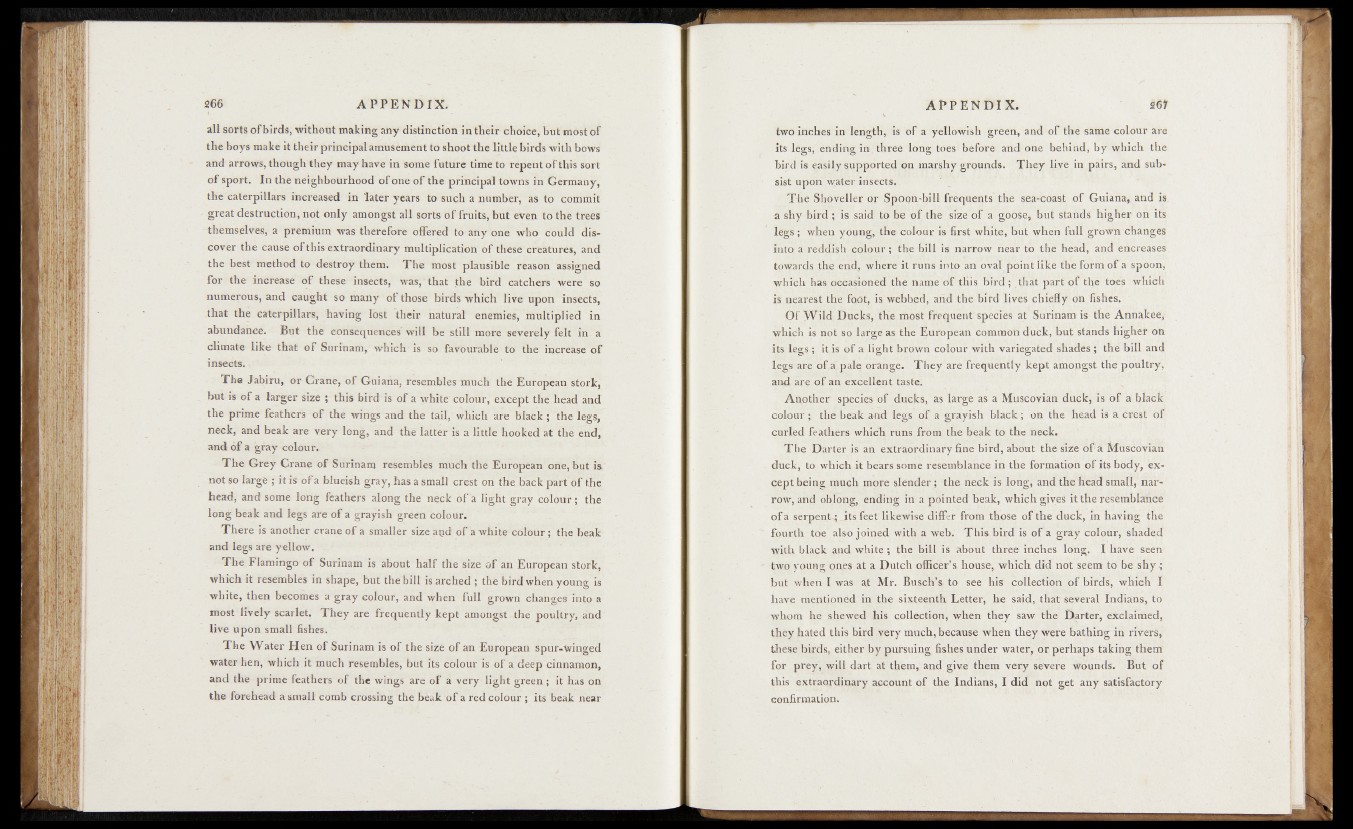
all sorts of birds, without making any distinction in their choice, hut most of
the boys make it their principal amusement to shoot the little birds with bows
and arrqws, though'they may have in some future time to repent of this sort
of sport. In the neighbourhood o f one o f the principal towns in Germany,
the caterpillars ftiereased in la te r years to such a number, as to commit
great destruction, not only amongst all sorts o f fruits, but even to the trees
themselves, , a premium was therefore offered to anyfohe who Coulli discover
the cause of this extraordinary multiplication of these creatures, and
the best method to destroy them. T he most plausible reason assigned
for th e increase o f these insects, was',' that the bird catchers * Were so
numerous, and caught so m an y J of those birds which live upon insects,
that the caterpillars, having Tost their natural enemies, multiplied in
abundance. But the consequences* will be still more severely felt in a
climate like that o f Surinam," which' is SO favourable to the increase o f
insects. ..
The Jabiru, or Crane, o f Guiana, resembles much the European, stork, 1
but is o f a larger size ; this birch is of a white" colour,except the.head arid
the prime feathers o f the wings and the tail, which are black; ''the legs,
neek, and beak are very long, and the latter is a little hooked at the end,
and of a gray colour.
The Grey Crane of Surinam resembles much the European oiSfe\'but is,"
not so large; it is o f a bhiekh gray, Has a small crest on the flick paVTdf the
head, and some long feathers along the neck o fa light gray colour; the
long beak and legs are o f a grayish green colour.
There is another crane o f a smaller size aqd o f a white cofour; the beak
and legs are yellow.
The Flamingo o f Surinam is about half the size o f an European stork,
which it resembles in shape, biit the bill is arched; the bird when young is
white, then becomes a gray colour, and when full grown changes into a
most lively scarlet. They are frequently kept amongst the poultry, abd'
live npon.small fishes.
The Wafer Hen o f Surinam is of. the size of an European spur-winged
water hen, which it much resembles, but its colour is o f a deep cinnamon,
and the prime feathers of the wings are of a very' light green ; it has on
the forehead a small comb crossing the beak o f a red colour ; its beak near
two inches in length,, is ^F a yellowish green, and of the same colour are
its legs;,ending in-, three long foes'1 before and one behind, by which the
6|rd is easily sqpported qn marshy grounds. They live in pairs, and subsist
upóri w.ater insects,
The Shoveller or SpoQn-biff freq-uentsf'Jthe sea-coas.t of Guiana,, and is.
a shy bird ; is, said to be qf„ the' size o rh góÓse£ but stands’ higher on its
legs ; when young, thq'oocour is first white, but when full g r o W n changes
into $ reddish colour; the bill is narrow near to the head, and encreases.
towards the end, where it runs info.an oval point like the form o f a spoon,
which has. occasioned the npme o f this bird; that part of the toes which
is nearest the foot, is webhed, arid the bifd lives phiefiy- on fishes."
Of Wild? Ducks, the most ffjeq.uent specie#at,Surinam is the Annakee,
whiph is not so large as the European common duck, but adds higher on
its le g s; it,is of a light brown colour with variegated shades ; the bill and
legs are ofia,pale orange. They are freqriepffy'kept amongst the poultry,
arid are o f an excellent taste.
Another' species o f ducjts, as large as a Muscoyian duck, is o f a black
ct^our;j-1^ beak and legs p t a grayish black; oh the''head'is a crest'of
curled feathers which runs from the beak to the neck.
The Darter is an extraordinary fine bird, about the sitfe of'a Muscovian
ffuck, to which it bears some resemblance in the formation of its body, except
being much more slender; the neck is long, and the head small, narrowband
oblong, ending m a pointed beak, which giveé it the resemblance
of a' serpent-^.its feetlikewise differ from .those of the duck, in having the
fourth toe* also joined with a web." This bird is of a griy colour, shaded
with black and-white; the bill' is about three inches long. 1 have seen
two young on.es at a Dutch officer’s house, which did not seem to be shy.;
but when I was at Mr. Busch’s, to see hisf collection of birds, which I
have mentioned in the sixteenth Letter, .he said, that several Indians, to
whom he shewed his collection, when they saw the Darter, exclaimed,
they hated this bird .very much, because when they were bathing in rivers,
these birds, either by pursuing fishes under water,, or perhaps taking them
for prey, will dart at them, and give them very severe wounds. But of
this extraordinary account of the Indians, I did not get any satisfactory
confirmation.